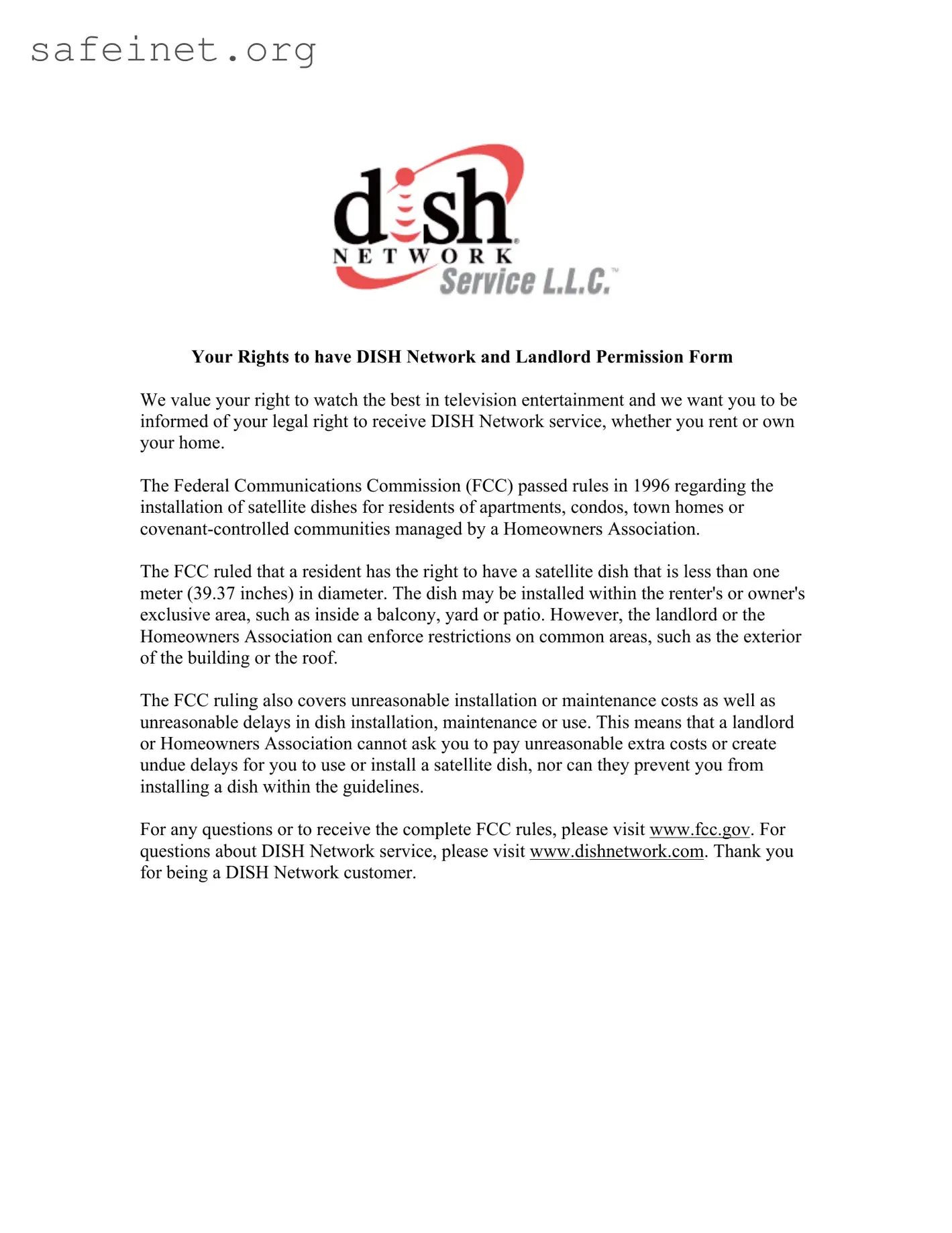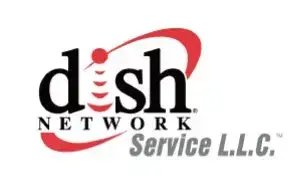Your Rights to have DISH Network and Landlord Permission Form
We value your right to watch the best in television entertainment and we want you to be informed of your legal right to receive DISH Network service, whether you rent or own your home.
The Federal Communications Commission (FCC) passed rules in 1996 regarding the installation of satellite dishes for residents of apartments, condos, town homes or covenant-controlled communities managed by a Homeowners Association.
The FCC ruled that a resident has the right to have a satellite dish that is less than one meter (39.37 inches) in diameter. The dish may be installed within the renter's or owner's exclusive area, such as inside a balcony, yard or patio. However, the landlord or the Homeowners Association can enforce restrictions on common areas, such as the exterior of the building or the roof.
The FCC ruling also covers unreasonable installation or maintenance costs as well as unreasonable delays in dish installation, maintenance or use. This means that a landlord or Homeowners Association cannot ask you to pay unreasonable extra costs or create undue delays for you to use or install a satellite dish, nor can they prevent you from installing a dish within the guidelines.
For any questions or to receive the complete FCC rules, please visit www.fcc.gov. For questions about DISH Network service, please visit www.dishnetwork.com. Thank you for being a DISH Network customer.
Landlord/Homeowners Association
LETTER OF PERMISSION
FOR PROPERTY MODIFICATION
CUSTOMER INFORMATION
Date:
Tenant/Resident Name:
|
|
|
|
|
|
|
|
|
|
|
|
|
Street Address: |
|
|
|
|
|
|
|
Unit #: |
City: |
|
|
|
|
State: |
|
|
Zip: |
|
|
Community or Apartment Name: |
|
|
|
|
|
|
|
|
|
Telephone #: |
|
|
Alternate Telephone #: |
|
|
|
|
|
As the Manager/Landlord/Homeowners Association Representative/Owner of the above mentioned property, I (we) represent that I (we) have the authority to sign this Letter of Permission and hereby do authorize installation of a DISH Network Satellite antenna and system at the above-mentioned address by DISH Network Service L.L.C., or their authorized service provider. I (we) have reviewed the site survey, and approve the modifications to the property listed on the site survey.
MANAGEMENT/HOMEOWNERS ASSOCIATION/LANDLORD’S INFORMATION
Property name (if applicable):
Management/Homeowners Association Representative/Landlord’s Name:
|
|
|
|
|
|
|
|
|
|
|
|
|
Street Address: |
|
|
|
|
|
|
|
|
City: |
|
|
|
State: |
|
|
Zip: |
|
Telephone #: |
|
|
|
Alternate Telephone #: |
|
|
|
Signature: |
|
|
|
|
|
|
Date: |
|
Title: |
|
|
|
|
|
|
|
|
|



